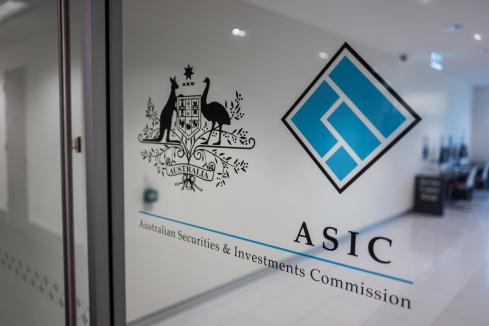The word “helium” conjures up images of kids’ birthday parties, floating balloons, and squeaky voices, however, there is much more to the commercial proposition for helium. ASX-listed Blue Star Helium has backed itself in with a strategy to amass hordes of land in the USA that surrounds a historic helium gas field that once produced helium at awesome grades.


The word “helium” conjures up images of kids’ birthday parties, floating balloons, and squeaky voices, however, there is much more to the commercial proposition for helium. ASX-listed Blue Star Helium has backed itself in with a strategy to amass hordes of land in the USA that surrounds a historic helium gas field that once produced helium at awesome grades.
Interestingly, the low-profile but lucrative gas can be found in more than just party balloons.
Growing demand in the burgeoning space exploration and high-powered computing industries, together with helium’s biggest application in Magnetic Resonance Imaging, or MRI machines, is igniting the helium industry in North America in particular.
Since mid-2019, the only pure helium play on the ASX, Blue Star Helium, has been a first-mover in a global helium hotspot, accumulating an enviable landholding position in Las Animas Colorado, along trend and in the vicinity of the historic Model Dome helium gas field.
The Model Dome field yielded helium gas at a cracking grade of 8 per cent in its day and is acknowledged as one of the US’s and the world’s highest helium concentration fields. Model Dome was discovered in the 1920s and was in production for a short period before the US Government snapped it up for the country’s strategic commodity reserves. Its shallow, vertical wells initially produced at rates between a whopping 500mcf per day and 1,000 mcf/day of raw gas per well.
Less than 10km west of Model Dome, Blue Star’s Enterprise and Galileo prospects are interpreted to have the same helium gas source rocks trapped between the same reservoir and seal strata characteristics as those of the old field. Energy consultancy firm, Sproule, has estimated the Enterprise and Galileo targets host potential combined 2U/P50-categorised resources of 3 billion cubic feet of recoverable helium.
Blue Star’s blue-sky potential also resides in the roughly 75-80 per cent of its net approximately 108,000 acres or 42,500 hectares of leases in the highly prospective Las Animas district that takes in a whole host of helium prospects in addition to Enterprise and Galileo.
The company has been furiously picking up large acreage positions around Model Dome and has gone all-in on its strategy that helium is becoming a critical commodity and that the ground around the old Model Dome field, at least theoretically, should also be well endowed with helium.
It has just secured an additional 35,000 acres or about 14,000 hectares across 22 new leases in the Las Animas area, representing a massive 50 per cent increase in its net acreage position. The leases, which cost US$849,492, are included in the overall 108,000 acres above.
Plans are now afoot for Blue Star’s maiden well to be drilled at Enterprise later this year and the market has punted the company’s stock from just one cent a few months ago to 3 cents now in anticipation of the first well being drilled.
The latest leases Blue Star clinched take in a significant and targeted increase in net acreage over four of its preferred prospects with the potential to be added to the drilling program along with Enterprise.
The company plugged away for more than a year or so generating a poultice of technical data – from petrophysical analysis of historic wells to regional soil gas sampling, surface and subsurface mapping, geological modelling and geochemical analysis. It has done the legwork and the proposed drilling campaign looks to be well-targeted.
Importantly, the sampling on Blue Star’s ground is showing helium gas which is a pretty good start.
The Enterprise and Galileo prospects are located in a “proven helium play fairway” containing the Model Dome field and its overall Las Animas project lies in a region that’s central to the supply chain, blessed with infrastructure supporting the mature helium industry in the US.
According to the company, its technical evaluation work points to the play elements of helium charge, high-quality reservoir and the presence of a good top seal spreading across the Enterprise and Galileo prospects.
The US market accounts for about 40 per cent of global helium production and demand appears set to remain strong. Canada-based broking firm Cormack Securities said: “Alongside the better-known uses of helium (for example, balloons and medical equipment), the growing space exploration industry and the world’s increasing dependence on technology and high-powered computing will continue to propel demand for the gas.”
“The void in supply created by the US depleting its helium reserves in 2019 (about 25 per cent of global supply) has opened up an enticing opportunity for new North American players to supply helium to a growing market.”
Helium has largely flown under the radar to date but with almost every country town and outlying city in the Western World now seeking to keep up with their big-city counterparts by securing local MRI machines, it’s easy to see where some of the future demand for helium will come from.
It is used for cooling the superconducting magnets in MRI machines and also in the manufacture of fibre optic cabling, cooling magnets in cloud-based supercomputer hard drives and servers, and space exploration to name just a few uses.
Other key applications include in semiconductor manufacturing and arc welding where it is used as an inert shielding gas, for leak detection in pipelines, rocket propulsion systems and the defence, lifting gas, medical, engineering and high-level science industries. It has also been designated as a critical commodity by the US Government which will drive local demand into the future.
Blue Star’s low CAPEX, low operating-cost and high-grade helium production aspirations are further enhanced by the company not having to sink a pile of capital into building an expensive new production operation and separation plant should it prove up economic helium flow rates.
Australia and US-based research house, Independent Investment Research, said in a recent report: “There is considerable physical infrastructure in place, particularly in the region, starting 160km to the east of Blue Star’s leases. There are existing dedicated helium pipelines, helium separators and liquefiers with spare capacity and specialty companies that build and lease helium separation plants to third parties. This means that once Blue Star has the well network in place, the balance of the capital equipment required can be leased rather than purchased, reducing pre-production capital costs.”
The region also boasts a highly developed community of specialist contractors available to support all the production aspects of the helium business, significantly reducing the start-up risk for a junior player such as Blue Star.
Its relatively shallow exploration wells to be drilled will cost about US$300,000 for a dry hole and US$400,000 for a producing well – numbers that are unheard of in the conventional oil and gas industry where it can cost millions to drill one well.
According to the Independent Investment Research (IIR) group, “based on Model Dome well production history, we estimate that a 2mcf/day starter project could be supplied by up to five wells at a total cost of US$2 million”.
Helium is generally sold as a compressed gas at 98 per cent concentration under long-term take or pay contracts and sold at the plant gate into customers’ tube trailers and trucked out by the buyer.
IIR commented: “Commercial production would require the installation of a separation plant to produce A-grade helium – ie, over 97.5 per cent helium. This is most likely to be a standard modular pressure swing adsorption plant supplied in 2MMscf/d capacity units capable of processing 5-10 per cent helium input gas into a 98 per cent product stream. These plants are available for lease from the manufacturer.”
“The sales point could be at the spigot or outlet tap at the production site, or the producer could deliver tube trailers of compressed or liquified gas to end customers.”
The other big attraction for Blue Star is the rising price of A-grade helium, with anecdotal evidence suggesting prices upwards of about US$300/mcf and some estimates are even as high as US$400/mcf.
The helium growth story has not caught on in Australia yet but looks to be gaining traction in Canada. Six months ago, the share price of little-known TSX-V-listed and Vancouver-based Desert Mountain Energy Corp was languishing at around C15 cents.
However, after registering helium grades of 7 per cent and 4 per cent from two exploration wells at its Arizona project, Desert Mountain Energy experienced a significant valuation uplift, with its share price skyrocketing to C$1.55.
Highlighting the exponential upside effect of a high-grade helium operation is Cormack Securities’ conservative estimate of a potential project’s economics. The broking house said: “With conservative assumptions of $150/mcf for processing, operating costs of $50/mcf, and a flat 4.25 per cent royalty rate, we would expect a well with 1.0 per cent helium to payout in 14 months with an IRR of 144 per cent under helium prices – net of transportation – of US$280/mcf. Using the same assumptions but factoring in helium content of 1.5 per cent, we would expect a 10-month payout with a 282 per cent IRR.”
The critical ingredient for Blue Star will be the helium grade. Realising an 8 per cent helium grade at the Enterprise or Galileo prospects will be tantamount to one of the highest-grade helium prospects in the world today.
Frankly, it could still fall well short of that number and still be lucrative with plenty of helium being produced around the world at grades of well below 8 per cent.
Blue Star has backed itself in on its helium strategy by building such large landholdings around Model Dome. If the strategy works, it will be off to the races for Blue Star Helium followers.
Is your ASX listed company doing something interesting? Contact: matt.birney@businessnews.com.au









